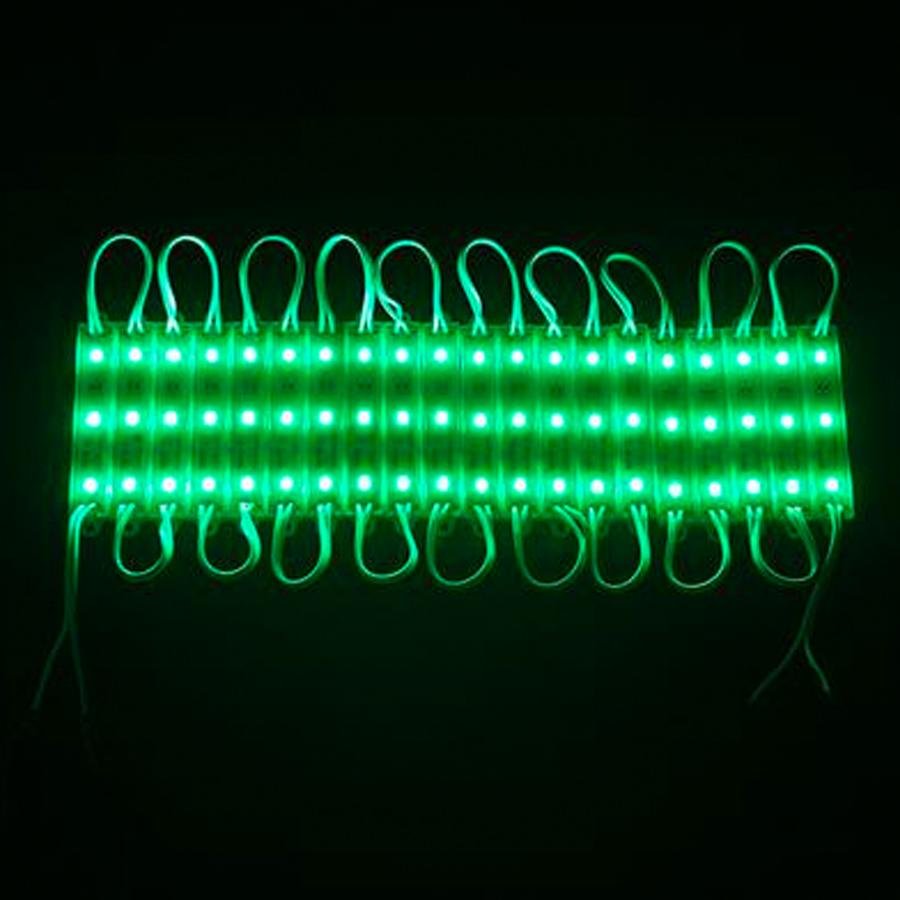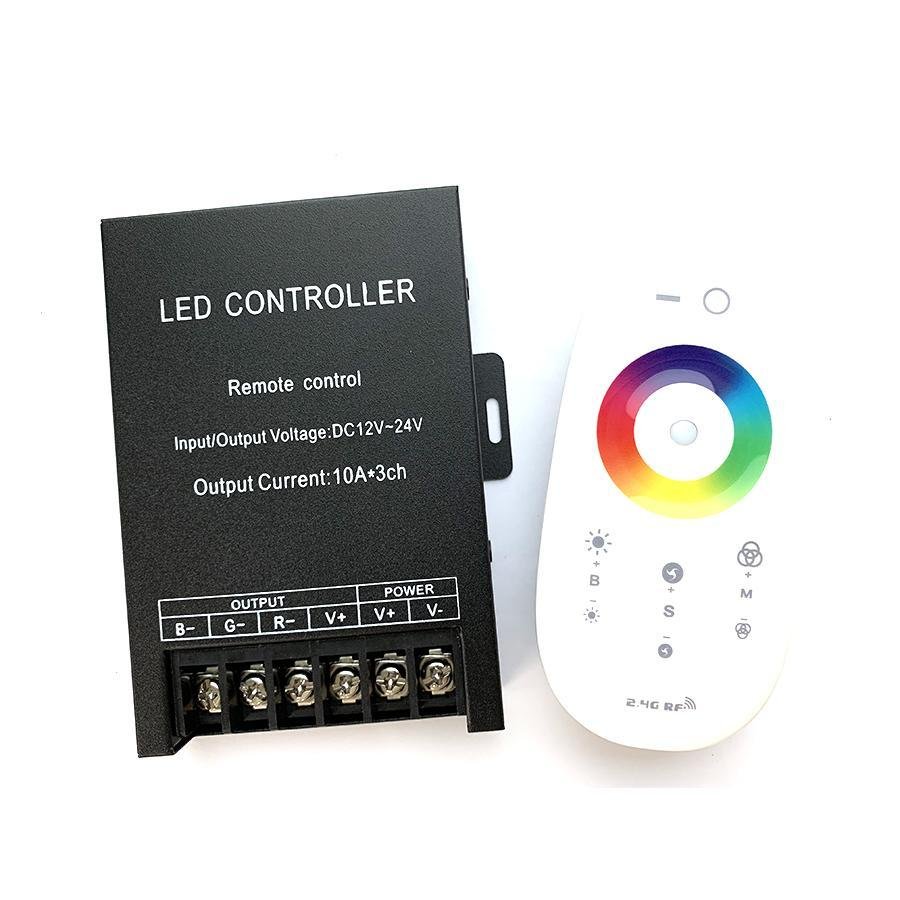LED modules are versatile lighting components that have gained significant popularity in various applications. With advancements in technology, LED modules have become increasingly efficient, durable, and cost-effective. They offer numerous benefits over traditional lighting options, making them a preferred choice for both residential and commercial settings. In this article, we will explore the different types of LED modules available in the market and their unique characteristics. So, let's dive in and discover the exciting world of LED modules!
Table of Contents
|
1. Introduction
In recent years, LED (Light-Emitting Diode) technology has revolutionized the lighting industry. LED modules, consisting of multiple LEDs mounted on a circuit board, offer exceptional flexibility, energy efficiency, and longevity. They are extensively used in applications such as signage, architectural lighting, automotive lighting, and general illumination. This article aims to provide a comprehensive overview of the different types of LED modules available in the market and their specific features.
2. Understanding LED Modules
Before delving into the various types of LED modules, it is essential to understand their basic construction and functioning. LED modules comprise individual LED chips mounted on a substrate, which acts as a support and provides electrical connectivity. The LEDs are typically arranged in a grid pattern, allowing for uniform illumination and easy integration into lighting fixtures. LED modules can vary in size, shape, color, and level of brightness, catering to different lighting requirements.
3. Types of LED Modules
LED modules come in a wide range of variations to meet the diverse needs of lighting applications. Here are some of the most common types:
3.1 Surface Mount LED Modules
Surface Mount LED Modules, also known as SMD LED modules, are compact and easy to install. They feature tiny LEDs mounted directly onto a printed circuit board (PCB) and are available in various sizes, including 3528 and 5050. These modules are commonly used in signage, display boards, and decorative lighting due to their versatility and vibrant color options.
3.2 High-Power LED Modules
High-Power LED Modules are designed to deliver a significant amount of light output. They are equipped with powerful LED chips capable of generating high lumen levels. These modules find applications in outdoor lighting, such as streetlights, floodlights, and stadium lighting, where a bright and focused illumination is required.
3.3 Miniature LED Modules
Miniature LED Modules are compact and ideal for applications where space is limited. They are commonly used in handheld devices, automotive lighting, and indicator lights. Despite their small size, miniature LED modules offer excellent brightness and energy efficiency.
3.4 Flexible LED Modules
Flexible LED Modules, as the name suggests, are highly flexible and bendable, allowing for creative lighting designs and installations on curved surfaces. These modules are commonly used in architectural lighting, accent lighting, and displays that require unconventional shapes or dynamic lighting effects.
3.5 RGB LED Modules
RGB LED Modules incorporate red, green, and blue LEDs in a single package, allowing for the generation of a wide spectrum of colors. They are widely used in stage lighting, entertainment venues, and decorative lighting applications. RGB LED modules offer versatility and the ability to create vibrant and dynamic lighting displays.
3.6 COB LED Modules
COB (Chip-on-Board) LED Modules consist of multiple LED chips mounted directly onto a substrate, resulting in a high-density lighting source. They offer excellent thermal management and uniform light distribution, making them suitable for applications that require high-quality illumination, such as retail lighting, downlights, and track lighting.
3.7 Edge-Lit LED Modules
Edge-Lit LED Modules are thin, flat panels with LEDs mounted along the edges and a light-guiding layer to distribute the light evenly across the panel. These modules are commonly used in backlighting applications, such as illuminated signs, retail displays, and LCD monitors.

3.8 Backlit LED Modules
Backlit LED Modules are designed to provide uniform backlighting for translucent surfaces, such as lightboxes and signage. They offer excellent brightness and energy efficiency, ensuring vibrant and eye-catching visuals.
3.9 OLED Modules
OLED (Organic Light-Emitting Diode) Modules consist of thin organic layers that emit light when an electric current is applied. They offer exceptional color reproduction, wide viewing angles, and low power consumption. OLED modules are commonly used in high-end displays, smartphones, and automotive applications.
3.10 UV LED Modules
UV (Ultraviolet) LED Modules emit ultraviolet light and find applications in various fields, including counterfeit detection, sterilization, curing, and scientific research. They offer high-energy efficiency and a longer lifespan compared to traditional UV light sources.
3.11 IR LED Modules
IR (Infrared) LED Modules emit infrared light and are widely used in applications such as security systems, remote controls, and night vision cameras. They provide efficient and reliable infrared illumination, enabling the functionality of various devices.
3.12 Smart LED Modules
Smart LED Modules incorporate advanced control features, allowing for remote operation, color tuning, and integration with smart home systems. They are becoming increasingly popular in residential and commercial lighting, providing flexibility, convenience, and energy efficiency.
3.13 Outdoor LED Modules
Outdoor LED Modules are specifically designed to withstand harsh weather conditions and offer reliable performance in outdoor environments. They are commonly used in streetlights, parking lot lighting, and architectural lighting for buildings and landscapes.
3.14 Indoor LED Modules
Indoor LED Modules are designed for indoor lighting applications, including office spaces, retail stores, hospitals, and homes. They provide efficient, flicker-free illumination and contribute to energy savings and a comfortable lighting environment.
4. Factors to Consider When Choosing LED Modules
When selecting LED modules for a particular application, several factors need to be considered:
- Brightness and Lumen Output: Choose modules with appropriate brightness levels for the desired lighting effect.
- Color Temperature: Determine the required color temperature, such as warm white, cool white, or daylight, based on the application and ambiance.
- Energy Efficiency: Look for modules with high energy efficiency to minimize power consumption and reduce operating costs.
- CRI (Color Rendering Index): Consider the CRI value to ensure accurate color representation, especially in applications that require precise color rendering.
- Durability and Lifespan: Opt for modules with robust construction and a long lifespan to minimize maintenance and replacement costs.
- Dimming and Control Options: Evaluate the dimming capabilities and control options of the LED modules, especially in applications that require dynamic lighting control.
- Compatibility and Ease of Installation: Ensure that the LED modules are compatible with the intended lighting fixtures and installation requirements for seamless integration.
5. Benefits of LED Modules
LED modules offer numerous advantages over traditional lighting options. Here are some key benefits:
- Energy Efficiency: LED modules consume significantly less energy than conventional lighting, resulting in reduced electricity bills and lower carbon footprint.
- Longevity: LED modules have a longer lifespan compared to traditional lighting sources, minimizing the need for frequent replacements.
- Cost-Effectiveness: Although LED modules may have a higher upfront cost, their long-term cost savings in terms of energy efficiency and maintenance outweigh the initial investment.
- Environmental Friendliness: LED modules are free from harmful substances like mercury and lead, making them eco-friendly and safe for disposal.
- Instantaneous Operation: LED modules provide instant and full illumination without any warm-up time, unlike some traditional lighting options.
- Design Flexibility: LED modules come in various shapes, sizes, and colors, allowing for creative lighting designs and tailored solutions for different applications.
- Improved Safety: LED modules generate minimal heat, reducing the risk of burns or fire hazards. They are also less prone to breakage due to their solid-state construction.

6. Conclusion
LED modules have revolutionized the lighting industry with their versatility, energy efficiency, and durability. Understanding the different types of LED modules available in the market enables users to choose the most suitable lighting solutions for their specific applications. Whether it's for residential, commercial, or industrial purposes, LED modules offer a wide range of options to meet various lighting requirements while providing long-lasting and environmentally friendly illumination.
7. FAQs
-
Q: Are LED modules compatible with existing lighting fixtures?
- A: Yes, LED modules are designed to be compatible with various lighting fixtures, allowing for easy retrofitting or integration into new installations.
-
Q: Can LED modules be dimmed?
- A: Yes, many LED modules offer dimming capabilities, providing flexibility in adjusting the light output according to the desired ambiance or task requirements.
-
Q: Are LED modules suitable for outdoor use?
- A: Yes, there are specific LED modules designed for outdoor applications that are weatherproof and can withstand harsh environmental conditions.
-
Q: Do LED modules require any special maintenance?
- A: LED modules generally require minimal maintenance due to their long lifespan. However, occasional cleaning to remove dust or debris is recommended to maintain optimal performance.
-
Q: Are LED modules cost-effective in the long run?
- A: Yes, despite their higher upfront cost, LED modules offer significant long-term cost savings due to their energy efficiency, extended lifespan, and reduced maintenance requirements.





















































































